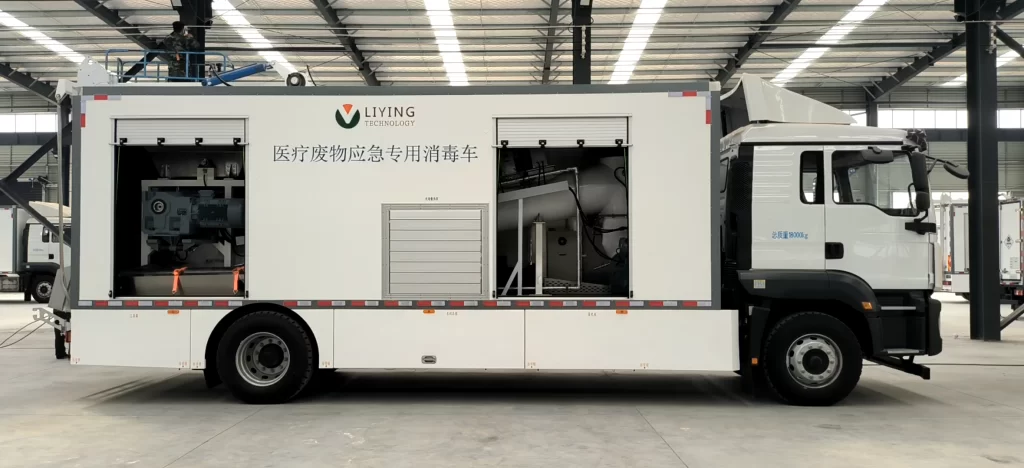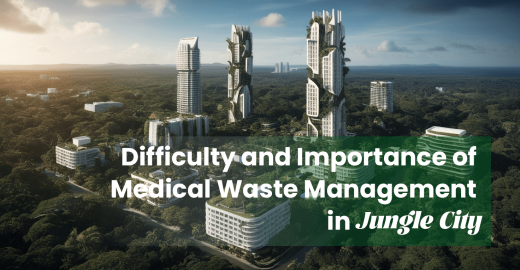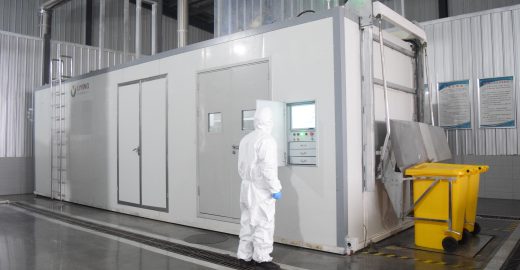Time:
The livestock sector plays an important role in the global economy but faces a number of challenges, particularly the outbreaks of animal diseases in recent years. The World Organisation for Animal Health (OIE) has detailed a list of 207 animal diseases based on the criteria of the Terrestrial Code and the Aquatic Code, among which are the well-known African Swine Fever (ASF) and Avian Influenza (AI). These diseases have plagued the livestock farming for a long time and can cause huge economic losses to farmers and other practitioners.
Taking these two animal diseases, which have been frequently in the public's ear in recent years, let's take a look at what they really are and how biohazardous waste disposal equipment can be used innovatively in the livestock farming!
Pork is the most consumed meat globally, accounting for more than a third of total global meat consumption. African Swine Fever has been spreading across Asia since 2018, rapidly expanding into Europe and beyond, causing huge economic losses and biosecurity risks.
This highly contagious virus can cause the death of an entire herd in a short period of time, has an extremely high prevalence of infection in pigs, and is so stable that it can survive in the environment for months or even longer, making it very challenging to control and prevent, severely impacting the pig farming's production and market supply.
The Food and Agriculture Organization of the United Nations (FAO) and the World Organisation for Animal Health (OIE) had launched in July 2020 a joint global initiative on the prevention and control of African swine fever. It noted that the continued spread of African swine fever under the new crown of epidemics had exacerbated the health and socio-economic crisis.
Avian influenza, often called bird flu. As a zoonotic infectious disease, it has dealt a great blow to the poultry farming industry. Different subtypes of avian influenza viruses have different pathogenicity and are able to spread rapidly through direct contact with wild birds or poultry, putting the entire poultry farming industry at risk of collapse.
On 17 February 2022, animal health officials in Indiana of the United States reported an outbreak of highly pathogenic H5N1 avian influenza on a turkey farm; and dozens of highly pathogenic avian influenza viruses have been found in waterfowl along the East Coast of the United States. These diseases have not only limited the development of the livestock farming, but also raised serious problems in international trade and consumer concerns about the safety of poultry products.
Avian influenza epidemics can easily threaten the poultry industry in various countries, and poultry farms always suffer heavy losses whenever there is an outbreak of the disease. Not only do they often have to cull their flocks locally, but even exports of poultry and their products near the site of the outbreak are restricted for a short period of time.

To meet these challenges, the United Nations has made demands. These include strict sterilization measures, vaccination, the burning and burial of the remains of infected animals and methods of disposing of biohazardous waste. These measures are not only effective in controlling the spread of the virus, but also help reduce environmental pollution and public health risks.
The African swine fever virus has an extremely high infection rate in pigs. This virus is very stable and can survive in the environment for months or even longer, making control and prevention very challenging. Extensive research and efforts have been made by the scientific community and the agricultural sector to try to develop an effective vaccine to prevent and control the spread of African swine fever. However, no vaccine has yet passed clinical trials and been widely used.
Therefore, the current control of African swine fever relies mainly on measures such as early detection and reporting of outbreaks, isolation of infected animals, strict animal traffic control, and thorough cleaning and disinfection of infected areas. Maintaining a high level of vigilance and implementing biosecurity measures remain the most effective means of prevention and control for pig farming and related industries.
Avian influenza is an infectious disease caused by avian influenza viruses that affects poultry and may sometimes spread to humans. The viruses are widespread in poultry and wild birds depending on their subtypes (e.g. H5N1, H7N9, etc.). Progress has been made in the development of vaccines against avian influenza viruses, and corresponding vaccines have been developed in different countries and regions against the major avian influenza subtypes (e.g. H5 and H7).
These vaccines usually target specific subtypes of viruses and can help prevent and control the spread of avian influenza. The use of vaccines is mainly focussed on the poultry farming, especially in high-risk areas or sites with outbreaks, where preventive vaccination can be used to reduce the risk of infection in poultry, thereby reducing economic losses and the potential for zoonotic diseases.
However, it should be noted that avian influenza viruses are subject to constant mutation and new subtypes or mutant strains may emerge, which may have an impact on the efficacy of existing vaccines. Therefore, continuous surveillance, research and updating of vaccine technology remain one of the key strategies to address the challenge of avian influenza.
LI-YING has developed a removable biohazardous / medical waste disposal unit that offers an innovative solution for the livestock farming. The equipment utilizes microwave disinfection technology to efficiently dispose of the remains of infected animals and associated waste, killing the virus in situ and effectively stopping the spread of the virus.
The mobility of LI-YING's MDV series of disinfection vehicles allows them to be quickly deployed to outbreak locations, or farms in need of emergency treatment. With its own generator and water tank, there is no need for external power supply, and it starts to dispose of diseased animals immediately upon arrival at the site. This flexibility not only saves on disposal costs, but also rapidly reduces the possibility of the virus spreading.

Using advanced microwave disinfection technology, the Medical / Biohazardous Waste Disposal Vehicle can dispose of up to 5 tonnes of animal remains and related infectious waste per day. The efficient disposal capacity effectively avoids the risk of secondary contamination and cross-infection.
Microwave disinfection technology in the treatment process without chemicals added, non-incineration will not produce black smoke pollution of the environment. Especially for the environment and human health has a serious impact on the pollutants such as dioxins and heavy metals. Reduced emissions protect the surrounding ecosystem.
LI-YING's portable medical / biohazardous waste disinfection and disposal vehicles not only bring new technological solutions to the livestock farming, but also enhance the ability to respond to disease outbreaks and control the spread of infectious diseases.
In the future, with the further popularization and application of such technologies, we can expect to see a more relaxed and effective response strategy for the livestock farming in the face of disease and environmental challenges.
By adopting these types of advanced technologies, we can work together to protect the sustainability and environmental safety of the livestock farming and contribute to global agricultural health.

What is the Polluter Pays…

Forests and wetlands are …

Of course! LI-YING has ex…
PDF Request